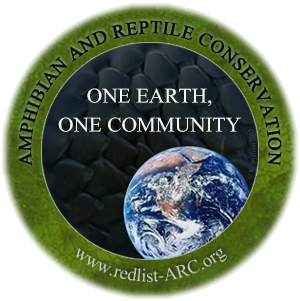| |
|
Supporting the Sustainable Management
of Amphibian and Reptile
Biodiversity
"Never doubt that a small
group of thoughtful, committed people can
change the world. Indeed, it is the only thing that ever
has." --Anon.
|
|
|
OLD PAPER ARC
Insolvent in 2006
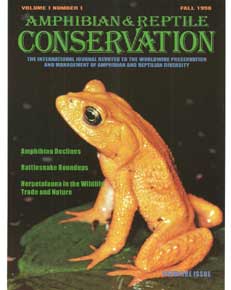 |
|
Volume 1,
Number 1 (1996): Premiere Issue
Amphibian declines, a history and
report on rattlesnake roundups in Kansas, timber harvesting effects on
Plethodon hubrichti, a cautionary note on population biology and
herpetological conservation, herpetofauna numbers and estimation in the
wildlife trade.
|
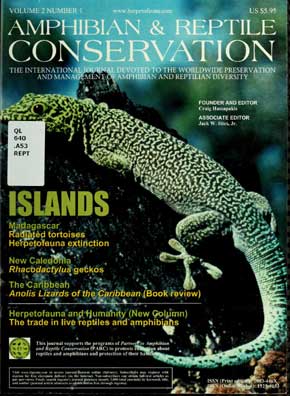 |
|
Volume 2, Number
1 (2000): Madagascar and New Caledonia
Madagascar and New Caledonia.
Commentary on the conservation of Geochelone radiata,
extinction and extinction vulnerability of amphibians and reptiles in
Madagascar, new data on distribution, status and biology of
Rhacodactylus spp., US role in the international live reptile
trade.
|
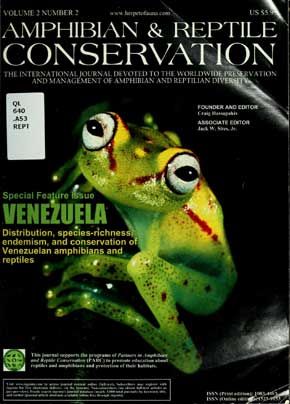 |
|
The distribution,
species-richness, endemism, and conservation of Venezuelan amphibians and
reptiles.
|
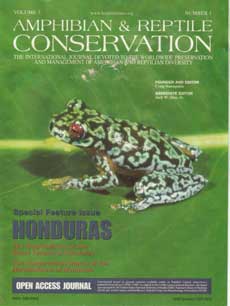 |
|
Volume 3, Number
1 (2004): Honduras
The conservation status of
amphibians and reptiles of Honduras, its cloud forests, an editorial on open
access publishing and the spread of
scientific information.
|
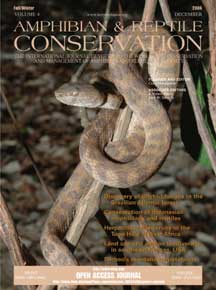 |
|
Herpetofauna of the
Crocker Range National Park, conservation
issues regarding the
amphibians and reptiles in Indonesia, reptiles and amphibians of the West
African Togo Hills, land use and anuran biodiversity in southeast Kansas,
and a new Brazilian anuran infected by chytrid fungus.
|
|
|
|
|

